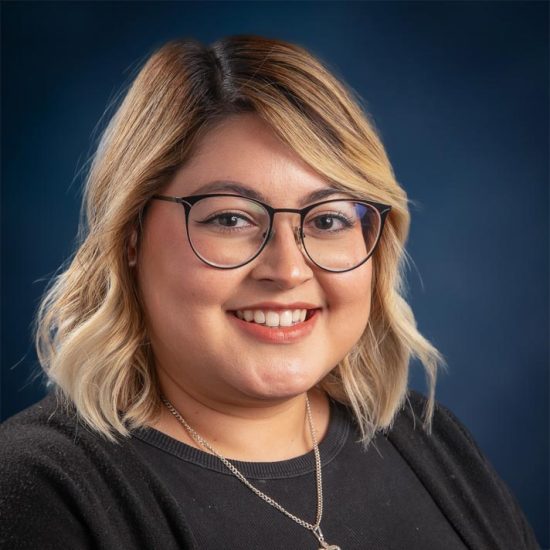
Financial Aid
If You're Worried About Paying for College, Relax.
Our tuition rates are some of the most competitive in Texas. On top of that, more than 70% of our students receive financial aid. Find out how you may be eligible for scholarships, grants, loans and/or a graduate assistantship.
FAFSA® Simplification Act
FAFSA® 2024-25 has undergone a significant transformation with the introduction of the FAFSA Simplification Act. This change will make the financial aid application process smoother and more straightforward.
How does this impact you? Click the button below to learn more about the FAFSA Simplification Act and stay ahead in your financial aid journey!
Financial Aid Basics
Financial aid includes a variety of programs, like scholarships, federal and state grants, and federal and state
Scholarships are sources of financial aid that do not have to be repaid. These can originate from the university or from outside sources.
Most grants do not have to be repaid and are given to students based on financial need.
Graduate assistant teaching (GAT), graduate assistant research (GAR), and graduate assistant non-teaching (GANT) assistantships at A&M-Commerce offer financial support for graduate education. Assistantships may be awarded to qualified graduate students who have received full or conditional admission to a master's or specialist program or full admission to a doctoral program. Assistantships are available in academic and non-academic departments. In addition to funding graduate education, assistantships provide students with opportunities for professional growth.
Financial Aid: Applying for Financial Aid tabs
Applying for Financial Aid
Your first step in applying for financial aid of any kind is to complete the Free Application for Federal Student Aid (FAFSA) or the Texas Application for State Aid (TASFA). You may qualify for low-interest, forgivable federal loans and other kinds of scholarships and grants after federal aid is applied .
- FASFA is for U.S. citizens, permanent U.S. residents and eligible non-citizens.
- If you are an international student, you are likely not eligible to complete the FAFSA, but you may be eligible for scholarships and private loans.
- U.S. Citizen
- Permanent U.S. resident with an Alien Registration Card (I-551)
- Conditional permanent U.S. resident with visa type I-551C
- Citizens of the Freely Associated States: the Federated States of Micronesia and the Republics of Palau and the Marshall Islands
- Eligible non-citizen with an Arrival/Departure Record (I-94) showing one of the following:
- Refugee
- Asylum granted
- Parolee (for a minimum of one year)
- Cuban-Haitian entrant
- It is extremely important to understand the questions on the FAFSA especially with questions regarding whether you are a dependent or independent student.
- For more information review Determine Your Dependency Status or view the Dependency Status video.
- Your Social Security number (it’s important that you enter it correctly on the FAFSA!)
- Your parents Social Security numbers if you are a dependent student
- Your driver’s license number if you have one
- Your Alien Registration Number if you are not a U.S. citizen
- Federal tax information or tax returns including IRS W-2 information for you (and your spouse, if you are married), and for your parents if you are a dependent student IRS 1040, 1040A, 1040EZ
- Foreign tax return
- Tax return for Puerto Rico, Guam, American Samoa, the U.S. Virgin Islands, the Marshall Islands, the Federal States of Micronesia or Palau
- Records of your untaxed income such as child support received, interest income, and veteran’s non-education benefits, for you, and for your parents, if you are a dependent student
- Information on cash; savings and checking account balances; investments, including stocks and bonds and real estate but not including the home in which you live; and business and farm assets for you, and for your parents if you are a dependent student.
- You will need to create a FSA ID to electronically sign your FAFSA. If you are a dependent student, your parent will also need to create an FSA ID.
- How to Create Your FSA ID video
- When you are ready to complete your FAFSA, select “Filling Out a FAFSA” in Section 2. Follow the on-screen instructions.
- You may also obtain a paper version of the FAFSA from your high school counselor or from the Financial Aid & Scholarships Office. Please note that the paper FAFSA can take 3-5 weeks to be sent to A&M-Commerce.
- How to Fill out the FAFSA video
- If you or your parent has completed your taxes for the appropriate FAFSA year, you may be able to upload the required income information directly from your or your parents IRS tax return to your FAFSA. This step is highly encouraged because it can assist you in processing your FAFSA faster.
- IRS Data Retrieval Tool
- You’ll receive a Student Aid Report (SAR) Information Acknowledgment in the mail about 2 weeks after submitting your online FAFSA. If you provided a valid email address, you’ll receive an email with a link to your SAR information on the web within 5 days.
- To check the status of your Free Application for Federal Student Aid (FAFSA), click Log In on the FAFSA on the Web home page to log in; your FAFSA status can be found on the “My FAFSA” page, which displays immediately after you log in if you have already started or completed a FAFSA.
- When you receive your SAR, read the comments section and review. If you find any errors correct them. Remember: If you are a dependent student, your parents must sign the correction also.
- After the Financial Aid and Scholarships Office receives your FAFSA, you will be sent an email to your university email account on myLEO. You will then be required to log on to your myLEO account to complete any other requirements before you are awarded financial aid. Complete any outstanding requirements as soon as possible otherwise your financial aid will be delayed and you will not be awarded in a timely manner.
*Applications for assistance cannot be fully considered until all of the required application forms are received by the Financial Aid and Scholarships Office and the applicant is fully admitted as a regular degree-seeking student. Contact the Admissions Office for admission information. A&M-Commerce officially corresponds with students through their assigned A&M-Commerce email account myLEO.
Important Dates
The application period begins on October 1 of each year for the following academic year. You should complete the FAFSA or TASFA as soon as possible for each academic year, so put it on your calendar!
Application Priority Deadlines
To receive the best possible combination of financial assistance, applicants should submit all required application forms to the Financial Aid and Scholarships Office by the priority deadline dates listed below. Applications received after these deadline dates are awarded based on funds available.
| Fall/Spring | January 15th |
| Spring Only | November 15th |
| Summer | April 15th |
Deadline for 2023-2024 FAFSA & TASFA
Financial aid applications for the 2023-2024 year need to be received in the Financial Aid and Scholarships Office by June 30, 2024. Due to the various processes required, applications will not be accepted after June 30, 2024.
The FAFSA has been simplified with the new FAFSA Simplification Act. Click to learn how it affects your financial aid.
Graduate Student Aid
If you are enrolled in any graduate program and taking at least 6 hours, you may be eligible for financial aid.
Educational Testing Service (ETS), which administers the Graduate Record Examination (GRE), provides a limited annual supply of fee reduction certificates for the GRE. A limited supply of the fee reduction certificates are made available to colleges and universities and are disbursed based on financial need as determined by the Free Application for Federal Student Aid (FAFSA). If you meet the eligibility requirements, you will be required to pay 50% of the full test fee.
You must be a U.S. citizen or resident alien who is a college senior or an unenrolled college graduate.
- Receiving financial aid through an undergraduate college in the United States, American Samoa, Guam, U.S. Virgin Islands or Puerto Rico, and
- A dependent, who has a FAFSA that shows parental contribution (EFC) of no more than $2,500 for the senior year, or
- Self-supporting and has a FAFSA that shows a contribution (EFC) of no more than $3,000 for the senior year
- Have applied for financial aid and
- Have a FAFSA that indicates self-supporting status and a contribution of no more than $3,000.
- The ETS GRE Fee Waiver process has changed. Schools are no longer directly involved as in years past.
- If you are interested in applying for a GRE Fee Reduction Waiver you will need to complete the Reduction Waiver and attach a copy of the current FAFSA Student Aid Report (SAR).
View more information about the GRE Fee Reduction Certificate.
These grants are available for Texas residents and have limited funding. Eligibility is based on financial aid need as determined by completion of the FAFSA or TASFA. Awards vary based on funding levels for the academic year and your financial need. You must be enrolled in no less than six graduate credit hours. Early application is recommended.
The grant may pay up to $1,000 per semester, provided all eligibility is met each year, for up to two years or graduation, whichever comes first.
The grant may pay up to $1,500 per semester, provided all eligibility is met each year, for up to two years or graduation, whichever comes first.
The grant may pay up to $1,500 per semester, provided all eligibility is met each year, for up to four years or graduation, whichever comes first.
- Texas resident
- Fully or conditionally admitted to the Graduate School
- Pursuing a master’s or doctoral degree
- Financial need as determined by completion of the FAFSA/TASFA and all verification documentation by the priority deadline, January 15.
- Must be enrolled in 6 credit hours each long semester and summer session(s)
- You must meet the Financial Aid Standards of Progress requiring 3.0 GPA for each semester and institutional cumulative GPA
- This grant is renewable provided a FAFSA/TASFA is completed each academic year, financial need is demonstrated each year and the Financial Aid Standards of Progress are met at the end of each payment period
- Funds are limited and will be awarded on a first-come-first-served basis after all financial aid requirements are met
Note: Awards are predicated on the availability of funding.
Must be fully admitted into an eligible program. Provisional admitted students are not eligible. Contact the Graduate School to confirm full admission.
You must submit a copy of your certification/deficiency plan to the Office of Financial Aid and Scholarships. Non-degree programs are not eligible.
- Students in these programs may have limited loan eligibility due to loans borrowed to complete their undergraduate degree(s).
- Certification students should contact the Graduate School and/or the Certification Office to confirm full admission.
- Pell Grants are not available for certification students at A&M-Commerce.
- Students must contact Undergraduate Admissions to confirm full admission.
- Students in these programs may have limited loan eligibility if they have other student loans.
Financial Aid: Awarding Financial Aid
Awarding Financial Aid
We make every effort to meet your financial need through a combination of aid programs. Awards are given on a first-come, first-served basis. Limited funds are available, and they will be based on:
- The financial need of the applicant
- The limitations imposed by the various financial aid programs
- The availability of funding
- An award notice will be sent to you, the applicant, through your myLEO email account. The notice will indicate the types and amounts of aid offered.
- You must review your award notification in myLEO and accept or decline all the financial assistance offered to you.
Your total calculated need will likely not be met with gift-aid (grants and scholarships). In order to meet as much of the documented need as possible, you may apply for self-help programs (loans or employment). If, after the aid package has been awarded, it is determined that an additional resource(s), such as outside scholarship(s) and/or third-party payments are available to help meet the cost of attendance, the Office of Financial Aid and Scholarships will:
- Recalculate your (the applicant’s) eligibility to include the additional resource(s).
- Adjust your award to prevent an over-award situation. Adjustments may include canceling or decreasing previously awarded aid.
- Send a revised email to you indicating any revisions made to the aid package.
Based on current laws and regulations overseeing federal and state financial aid programs, eligible disbursements can be credited to university student accounts no more than 10 days prior to the first day of classes. Courses taken in sub-terms within the traditional fall/spring semester may have different release dates based on the earliest start date of coursework. In addition, specific online programs have different release dates due to the length of the terms.
The Office of Financial Aid and Scholarships authorizes eligible disbursements to student accounts beginning at 5 p.m. on release days. These dates are subject to change should federal and/or state laws and regulations change.
For information about financial aid refunds, please contact the Office of Student Accounts at 903.886.5050 or 903.886.5501. You can also email Student Accounts, visit their website or visit the refunds webpage.
- Courses taken by audit
- Credit hours earned by placement exams
- Non-credit coursework
- Transient and transfer students attending for only one term
- Non-degree students who will not seek a degree from A&M-Commerce
- Course(s) being repeated where a passing grade was earned and are accepted towards the degree
- Course(s) where a passing grade was earned and the course(s) is being repeated for the sole purpose of improving the GPA
- A course where a passing grade was earned and the course is being repeated in combination with another course for purposes of receiving financial aid
- Course(s) taken outside of a student’s degree program and not required for graduation
Financial aid: How to Accept Your Financial Aid Award
How to Accept Your Financial Aid Award
These will be the steps you will follow to accept your financial aid.
Log in to your MyLEO. Select the “Student Resources” tab and scroll to the bottom of the menu to click on the link titled “Your Financial Aid.” This opens your personalized financial aid homepage. Be sure to select the appropriate award year.
Select the “Award Offer” tab to accept or deny any offered financial aid by using each drop-down box. Please keep in mind, if aid is awarded for fall and spring, the amount awarded will be split between the terms, whether or not you modify the award.
Click on the submit button on the bottom right of the “Award Offer” page.
Acknowledge the terms and conditions, if prompted, and click “Accept Award” to confirm your decisions.
Financial Aid: Maintaining Your Eligibility
Standards of Academic Progress
MAINTAINING YOUR ELIGIBILITY
Stay on track; keep your financial aid intact! To remain eligible for financial aid, you will need to meet the government’s standards for academic progress.
The Higher Education Act of 1965, as amended, mandates institutions of higher education to establish a minimum standard of satisfactory academic progress for students who receive financial aid. These standards shall apply to all students who receive financial aid, unless the terms of a particular grant provide otherwise. These provisions apply to students who, at any point in their educational career, apply for financial aid.
The Office of Financial Aid and Scholarships will review each financial aid recipient for overall academic progress as well as end of term progress (fall/spring/summer II). All terms will be reviewed, including those for which financial aid was not requested.
Student records will be reviewed to ensure that the following criteria are met:
- Qualitative progress: Both institutional cumulative and semester/term GPA requirements are met.
- Quantitative progress: The required number of credit hours are completed each semester/term and, overall, the student has not exceeded the maximum number of credit hours allowed to complete degree (see below).
Grade Point Average (GPA) Requirement
Students must maintain both institutional cumulative and term GPA standards.
| Student classification | GPA required |
| Undergraduate students | 2.0 |
| Graduate students | 3.0 |
Hours Requirement
In general, to be eligible for financial aid in any semester/term:
- Undergraduate* and graduate students must be enrolled in at least six credit hours
- *Federal Pell Grant eligible undergraduate students may receive a minimum Federal Pell Grant for enrollment of less than six credit hours.
- All students must complete a minimum of 67% of the number of credit hours they attempted in a semester/term and overall (including transfer work).
- Calculation: Hours completed divided by hours attempted x 100
- Example: Student attempted 12 hours but withdrew from a three-hour class, completing only nine hours (9 hrs/12 hrs x 100 = 75%).
Undergraduate students
The number of credit hours a student attempts may not exceed 150% of the number of credit hours required for graduation in his or her program of study, as published in the university catalog. If the published number of hours required for graduation is 120, a student may not attempt more than 180 credit hours (120 x 150% = 180) and continue to receive financial aid. All periods of enrollment are considered, including those where the student did not receive financial aid as well as hours transferred from another school. If the number of attempted hours reaches 150% of the hours required for graduation, the student will no longer be eligible for financial aid.
Students will be limited to the following number of attempted hours to complete their degree or certification program:
| Degree or program | Attempted hours |
| Undergraduate degree | 180 |
| Second undergraduate degree | 45 |
| Teacher certification | 45 |
Graduate students
To coincide with A&M-Commerce’s Graduate School policy, graduate students pursuing a master’s degree must complete their degree program within six (6) years from the time they are admitted to their respective master’s program. Graduate students pursuing a doctoral program must complete their degree program within ten (10) years from the time they are admitted to their respective doctoral program. All periods of enrollment are considered, including those where the student did not receive financial aid as well as hours transferred from another school. Once the maximum time frame has been reached, the student will no longer be eligible for financial aid.
Graduate students who have been placed on a financial aid suspension for the 150 rule but have not reached their maximum year limit are advised to email [email protected] to request a manual Satisfactory Academic Progress review. This will allow the financial aid office to verify the students account information and remove the notification, if applicable.
In order to receive financial aid, you are required to successfully complete 67% of the classes attempted each semester and cumulatively.
Example: You’ve registered for 15 hours at the beginning of the semester but dropped a 3 hour class and received an F in another 3 hour class. Therefore, you’ve attempted 15 hours and completed 9 hours resulting in a completion rate of 60% (9/15 = .60).
Example: You’ve transferred from another school with 30 attempted hours but only completed 25 hours. You then attempt 15 hours at A&M-Commerce but only complete 3 hours. Therefore, you have a total of 45 attempted hours and 28 completed hours resulting in a completion rate of 62% (after rounding – 28/45 = .6222).
NOTE: Summer terms (Summer I & Summer II) are considered one entire semester. Therefore, if you take 3 hours in each term, you attempted a total of 6 hours for the Summer terms.
The first time you fail to meet financial aid SAP standards, you will be placed on financial aid warning status. A notification will be sent to you via myLeo email. You will be eligible for financial aid while in a warning status; however, you must make satisfactory academic progress during the semester/term to remain eligible for financial aid.
In the event, you do not meet the requirements for SAP while on financial aid warning status, you will be placed on financial aid suspension. Notification will be sent to you via myLeo email. You will not be eligible for any type of federal, state or institutional aid while in suspension status.
Note: If you completely withdraw from all courses in a semester/term or receive all Fs for a semester/term, your aid will be canceled for any future aid periods. Students will automatically be on financial aid suspension.
If you have successfully appealed your financial aid suspension, you will regain aid eligibility for one semester/term under financial aid probation. While on financial aid probation, you must meet satisfactory academic progress/educational plan requirements during your probationary semester/term to regain eligibility for future semesters.
Attempted hours include all registered hours per semester whether or not the student earns a grade or receives credit.
The following are considered hours attempted, but not completed:
- F grades for undergraduate students
- D or F grades for graduate students
- W or withdrawal from courses for all students
- Q dropped course(s), but still enrolled for all students
- I, incomplete, ip, in progress, or x incomplete grades for all students
- U unsatisfactory grades for all students
- All transfer hours attempted, but not completed for all students
The following are considered completed hours and include all semester hours for which the student earns a grade:
- A through D grades for undergraduate students
- A through C grades for graduate students
- S satisfactory grades for all students
- All transfer hours completed for all students
Financial assistance is usually not provided for repeated coursework. However, if a higher grade for a particular course is required for that course to be accepted to the student’s official program of study, financial assistance can be provided on an individual basis.
Certain courses, in the department of music and the department of art, though they appear to be repeat courses are not repeated courses. The course needs to be taken several semesters in order to obtain the necessary credit hours within the course.
Are you a student receiving financial aid and considering dropping a class or completely withdrawing? Below are just a few things you should know before you withdraw.
All students must successfully complete minimum credit hour and minimum GPA requirements in order to receive financial aid funds each semester. Failure to do so can endanger your ability to receive financial aid for future semesters.
More information about Satisfactory Academic Progress.
Return of Financial Aid Funds: The Department of Education requires institutions to perform a Return to Title IV Calculation when a student withdraws from the term/semester after receiving Federal Financial Aid. The Financial Aid Office may be required to return a portion of a student’s Federal Financial Aid depending on the student’s last day of Academic Engagement.
Outstanding Student Account Balance: Monitor your student account balance before and after you withdraw. You are responsible for any account balances. Outstanding balances can prevent you from registering, receiving an official transcript, plus much more.
Several types of financial aid, such as Federal Pell Grant and Direct Student Loans, have limitations regarding the amount of funds you can receive in your lifetime. Once they are used, you cannot get those funds back; therefore, the longer you delay, the more you pay for your education.
Students who are no longer enrolled at least half-time will be required to begin repaying their student loans after their six-month grace period has ended. In addition, exit loan counseling will be required. It is important that students always know their student loan history. This information is always available at www.studentaid.gov for every loan at any institution attended.
For more information, contact your college financial aid advisor.
Financial Aid: Consequences for Drop
If you are considering dropping a class, you need to know how this can affect your financial aid and much more.
Satisfactory Academic Progress (SAP)
If you do not meet SAP standards, you will lose your financial aid eligibility. Students are required to successfully complete 67% of the classes they attempt along with the minimum GPA requirement for your classification. For more details see Satisfactory Academic Progress.
Return of Financial Aid Funds
Students that drop a class on or before the census day of the semester may no longer be eligible for all the financial aid they originally received. Several awards such as the Federal Pell Grant and Direct Loans have enrollment requirements in order to receive them. The Financial Aid Office will adjust your award accordingly and any funds that have been disbursed will result in a balance owed to A&M-Commerce.
Back to menuFinancial Aid: Consortium Agreements
CONSORTIUM AGREEMENTS
A&M-Commerce students who are taking courses at another college and transfer their coursework to A&M-Commerce may qualify for financial aid through the Consortium Agreement.
Through the Consortium Agreement, A&M-Commerce serves as the “home” school while the other institution serves as the “host” school. The Consortium Agreement officially notifies us that you are registered, the class is in your degree plan and that you will submit transcripts at the end of the class to A&M-Commerce. Consortium Agreements are not processed until after census day, which is the 12th day of class.
Note: Students enrolled in a CBE-TAB program are not eligible for Consortium Agreements.
- Spring and fall consortiums will require no less than 6 credit hours of enrollment at A&M-Commerce to be eligible for processing.
- Summer consortiums will not require enrollment at A&M-Commerce.
- Only federal financial aid will be applicable.
- The coursework to be taken must transfer back to A&M-Commerce and be applicable to the student’s degree at A&M-Commerce for the Consortium Agreement to be applicable.
- The coursework must be approved by the student’s A&M-Commerce academic advisor.
- The student cannot be receiving a Federal Pell Grant at the “host” institution.
- The student is responsible for the tuition and fees at the “host” institution.
- For consortium agreements to be reviewed and processed, they must be submitted at least 30 days prior to A&M-Commerce’s last day of class for the term.
- Transcripts must be received by the Admissions office no later than 30 days after the A&M-Commerce term end date.
- Complete part 1 of the Consortium Agreement form. (For summer terms please submit a Summer Consortium Agreement form.)
- The student’s A&M-Commerce academic/faculty advisor completes part 2 of the Consortium Agreement form.
- The Financial Aid Office at the “host” institution completes Part 3.
- The Financial Aid Office at the “host” institution or the student submits it to the A&M-Commerce Office of Financial Aid and Scholarships.
A student on a Consortium Agreement is responsible for and agrees to provide information, updates and documents to ensure their Consortium Agreement remains valid to continue to receive financial aid.
- The student is responsible for reporting enrollment changes and providing such changes within two days of when the change occurs.
- The student is responsible for submitting official academic transcripts to the Admissions office at A&M-Commerce, showing completion of the coursework taken through the Consortium Agreement. If transcripts are not received in a timely manner, as stated above, the aid previously disbursed as a result of the consortium being processed will be returned. This will create a balance that will have to be paid.
For further information or questions regarding Consortium Agreements, please contact the Financial Aid and Scholarships Office at [email protected].
Financial Aid: Veterans and Military Services – Benefits Information
Veterans and Military Services
Your GI Bill benefits will go further at A&M-Commerce. With some of the lowest tuition rates in the state, we make it easier for our veterans to earn a college degree.
A&M-Commerce, with the support and cooperation of the Department of Veterans Affairs and the Texas Veterans Commission, is proud of and dedicated to serving veterans and their dependents in their pursuit of higher learning. Find out how to make the most of your military training and benefits as you convert that experience into a highly valued education that will enable you to succeed in the marketplace.
Visit Veterans and Military Services for more information.
Applications for benefits for new veterans and their dependents can be made online directly to the U.S. Department of Veterans Affairs (VA). The VA will mail a Certificate of Eligibility showing eligible benefits.
Veterans will upload the COE and DD 214 to the Request for Certification form.
Dependents will upload the COE to the Request for Certification form.
Transfer students utilizing CH.33 Post 9/11 will need to complete VA Form 22-1995 to inform the VA of the change in place of learning.
Transfer students utilizing CH.35 will need to complete VA form 22-5495 to inform the VA of the change in place of learning.
Every semester a Request for Certification (PDF) form for all students receiving a GI Bill must be submitted to receive benefits.
Chapter 30: Montgomery GI Bill Active Duty
Chapter 31: Veteran Readiness and Employment
Chapter 33: The Post 9/11 GI BILL (NEW)
Chapter 35: Survivors and Dependents Educational Assistance Program
Chapter 1606: Montgomery GI BILL Selected Reserve Educational Assistance Program
Veteran and dependent students will need to apply for Hazlewood by using the Hazlewood Application
Texas Hazlewood Act Exemption Application for Continued Enrollment
TVC-ED 3 Hazlewood Eligibility Requirements 2016
Financial Aid: Forms
Forms
Instead of using email, please use the Secure Upload Tool to submit your forms and documents.
- Marital Status Change Request Form 2024-2025
- Consortium Agreement
- Summer Consortium Agreement
- Financial Aid Study Abroad Form
- Scholarship Enrollment Exception Form
- University Scholarship Awarding Form
- Controlled Substance Restrictions Statement
- Cost of Attendance Change Request Form
- Outside Resource Form 2024-2025
Please use the correct form below if your financial or family status has changed since you completed your 2022-2023 or 2023-2024 FAFSA.
- Student-Verification of Income for Non-Tax Filer Form 2023-2024
- Student-Verification of Income for Non-Tax Filer Form 2024-2025
- Child Support Paid Form 2023-2024
- Child Support Paid Form 2024-2025
- Parent-Confirmation of Assets Form 2023-2024
- Parent-Confirmation of Assets Form 2024-2025
- Student-Confirmation of Assets Form 2023-2024
- Student-Confirmation of Assets Form 2024-2025
- Dependent Student-Family Household Size Form 2023-2024
- Dependent Student-Family Household Size Form 2024-2025
- Independent Student-Family Household Size Form 2023-2024
- Independent Student-Family Household Size Form 2024-2025
- Student-Support Test Form 2023-2024
- Student-Support Test Form 2024-2025
- Student-Enrollment History Verification Form 2023-2024
- Student-Enrollment History Verification Form 2024-2025
- Verification of Other Untaxed Income Form 2023-2024
- Verification of Other Untaxed Income Form 2024-2025
- Parent-Verification of Income for Non-Tax Filer Form 2023-2024
- Parent-Verification of Income for Non-Tax Filer Form 2024-2025
- Unaccompanied Youth Form (prior to July 1, 2023)
- Unaccompanied Youth Form (after July 1, 2023)
- Unaccompanied Youth Form (after July 1, 2024)
- Unaccompanied Youth Form (prior to July 1, 2024)
Student-Identity and Statement of Educational Purpose can be completed in one of two ways:
- Print out the Statement of Educational Purpose Form.
- Take the form and your government-issued photo ID to a notary public (e.g., valid driver’s license, valid state ID card, valid U.S. Passport).
- Complete the form in the presence of the notary public.
- Mail the original, completed notarized form to our office.
(We cannot accept this form via email or fax. Please send via U.S.P.S. or drop off, in person, at The Welcome Center.)
- Come to the financial aid office. Bring your government-issued photo ID (e.g., valid driver’s license, valid state ID card, valid U.S. Passport).
- Our office will have a similar form for you to complete.
Verification of 2020 Income Information for Tax Filers
If 2019 income tax returns have been filed with the IRS and have been selected for verification, the student, and parent if applicable, can update the 2021-2022 FAFSA income data through the IRS Data Retrieval option.
Log in to your FAFSA as you will be correcting the financial information (income section). Selecting the “already completed taxes” and checking the box “you have filed” will enable you to select the “View Option” to link to the IRS. This will expedite the verification process; no IRS tax transcript will be needed.
If you cannot utilize the IRS Data Retrieval option, request a Tax Return Transcript through the IRS website at Get Transcript. Select the Tax Return Transcript option. Please make sure to submit the request. Also, please include your CWID on ALL pages before sending them to our office.



 Basics
Basics















